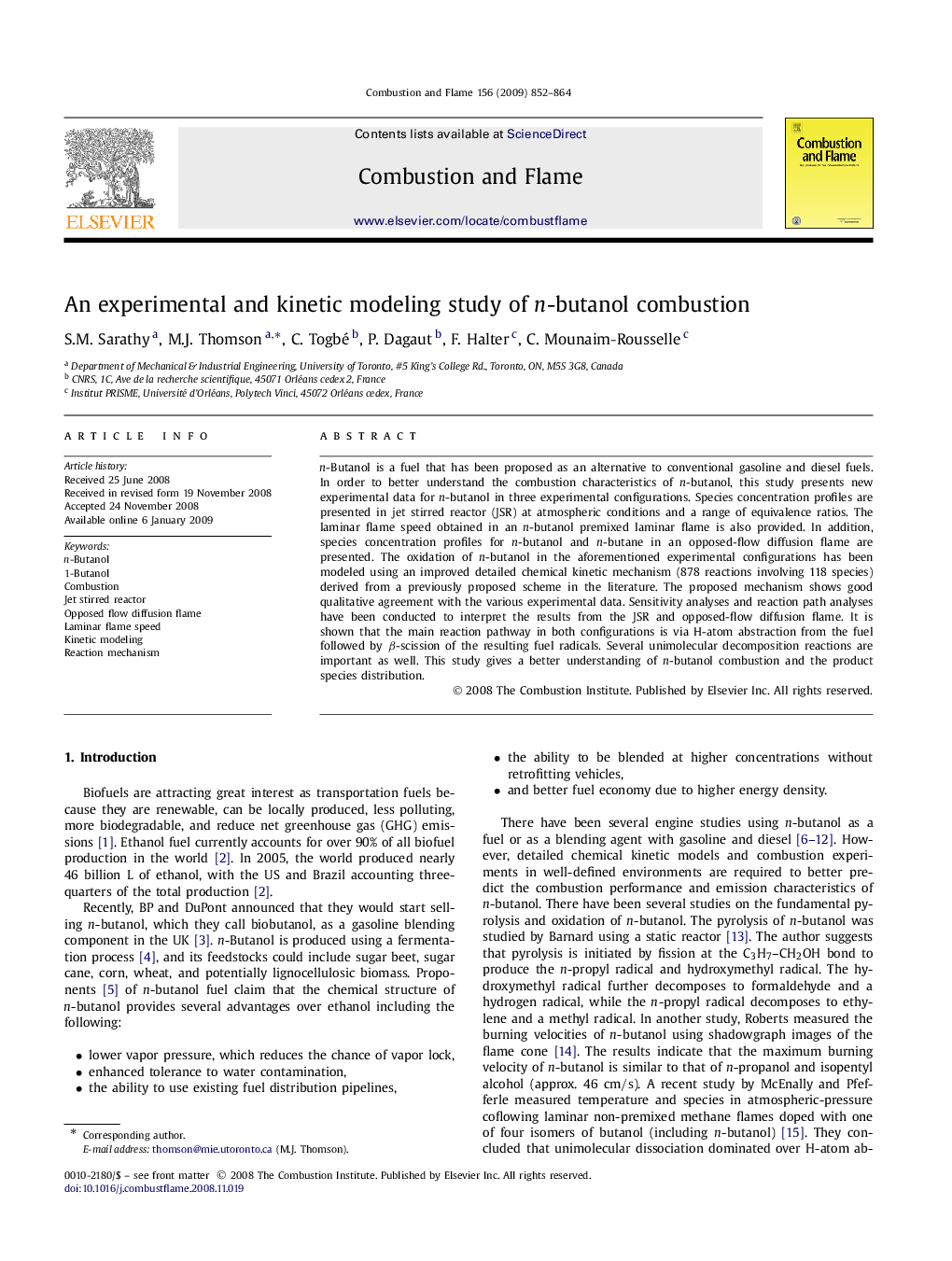| Article ID | Journal | Published Year | Pages | File Type |
|---|---|---|---|---|
| 169890 | Combustion and Flame | 2009 | 13 Pages |
n-Butanol is a fuel that has been proposed as an alternative to conventional gasoline and diesel fuels. In order to better understand the combustion characteristics of n-butanol, this study presents new experimental data for n-butanol in three experimental configurations. Species concentration profiles are presented in jet stirred reactor (JSR) at atmospheric conditions and a range of equivalence ratios. The laminar flame speed obtained in an n-butanol premixed laminar flame is also provided. In addition, species concentration profiles for n-butanol and n-butane in an opposed-flow diffusion flame are presented. The oxidation of n-butanol in the aforementioned experimental configurations has been modeled using an improved detailed chemical kinetic mechanism (878 reactions involving 118 species) derived from a previously proposed scheme in the literature. The proposed mechanism shows good qualitative agreement with the various experimental data. Sensitivity analyses and reaction path analyses have been conducted to interpret the results from the JSR and opposed-flow diffusion flame. It is shown that the main reaction pathway in both configurations is via H-atom abstraction from the fuel followed by β-scission of the resulting fuel radicals. Several unimolecular decomposition reactions are important as well. This study gives a better understanding of n-butanol combustion and the product species distribution.
